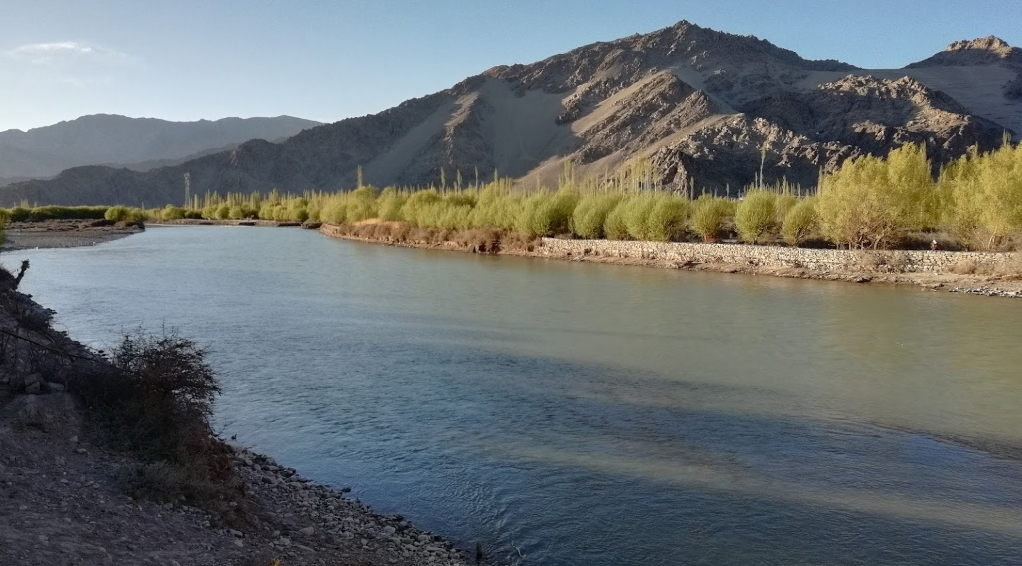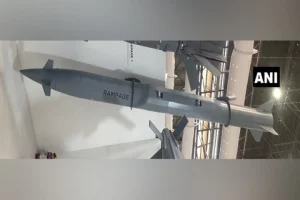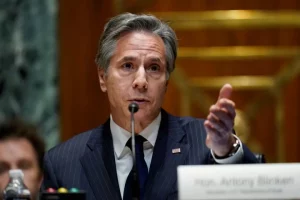After a gap of three years, India and Pakistan have resumed the “talks” on Tuesday in New Delhi. An eight-member delegation of Pakistan’s Commission on Indus Waters is in India for a two-day meeting of the Permanent Commission on Indus Waters under the Indus Water Treaty (IWT) signed between the two countries way back in 1960. After the 2018 meeting, a Pakistani delegation was invited by India to inspect the sites of the hydroelectric projects being constructed by India on cross-border rivers. But in protest against India’s decision to repeal Article 370 in Jammu and Kashmir, Pakistan had refused to come.
The talks are being held against the backdrop of a thaw in bilateral relations, which had taken a hit after the 2019 Pulwama suicide bombing and a subsequent military standoff. The last meeting of the permanent Indus commission was held in Lahore in August 2018. Under the Indus Waters Treaty (IWT), at least one meeting of the Permanent Commission on Indus Waters should be held each year alternately in India and Pakistan.
Recent comments by Pakistan Prime Minister Imran Khan and Pakistan Army chief General Qamar Bajwa about improving ties with India have also helped clear the environment, though India has said the onus is on Pakistan for creating an atmosphere conducive to a meaningful dialogue.
Back in time, partitioning the Indus rivers system was inevitable after the Partition of India in 1947. After years of negotiations between representatives from India and Pakistan, which were mediated by the World Bank, Prime Minister Jawaharlal Nehru went to Karachi, the then capital of Pakistan, to sign the Indus Waters Treaty along with the Pakistani head of state, General Ayub Khan. On September 19, 1960 Nehru and Ayub Khan signed the treaty in the presence of the representative of the World Bank.
The sharing formula divided the Indus river system into two halves. India was allocated the waters of the Sutlej, the Beas and the Ravi, the three less voluminous eastern tributaries of the Indus. More voluminous rivers, the Indus and its western tributaries, the Jhelum and Chenab went to Pakistan. The distribution of river waters gave India a share of about 20 per cent or about 3.3 crore of 16.8 crore acre-feet of estimated water in the Indus system.
India also gave Rs 83 crore in pounds sterling to Pakistan to help build replacement canals from the western rivers. Such generosity is unusual for an upper riparian state. Under this treaty, Pakistan got a favourable division of waters of the six rivers of the Indus system. Pakistan was given rivers that had greater volumes of flowing water. Since then, the role of India, as a responsible upper riparian country abiding by the provisions of the treaty, has been quite remarkable.
Nehru hoped that the agreement would bring prosperity to peasants on both sides, and peace, friendship, and goodwill between India and Pakistan. Unfortunately, this did not happen as relations between the two countries remain strained.
Despite opposition to the IWT and its criticism from Pakistan since 1960, the IWT has managed to survive even three wars (1965, 1971 and 1999), a number of military stand-offs (1987, 2001-02, 2008, 2016 and 2019) and several other episodes of political friction between the South Asian nuclear rivals. Today, however, the treaty is increasingly faced with challenges it wasn’t designed to deal with.
From its source in the northwestern foothills of the Himalayas, the Indus, one of Asia’s mightiest rivers, flows through the Indian state of Jammu and Kashmir and along the length of Pakistan to the Arabian Sea. The river and its five tributaries together make up the Indus Basin, which spans four countries and supports millions of people. Yet, fast-growing populations and increasing demand for hydropower and irrigation in each country means the Indus is coming under intense pressure.
Under the IWT, India does indeed have a right to “limited hydropower generation” upstream on the western tributaries allotted to Pakistan, including the Chenab and the Jhelum. However, many in Pakistan worry that even though these proposed dams may individually abide by the technical letter of the treaty, their effects will add up downstream.
As the World Bank backed up India’s plans to develop infrastructure on the river’s tributaries, Pakistan appealed to other potential mediators. Among them was the International Court of Arbitration in The Hague. Meanwhile, bilateral talks have fallen into difficulty due to the ongoing Kashmir conflict.
Pakistan also turned to its ally China through the development of the China-Pakistan Economic Corridor (CPEC), with Beijing seeking greater economic influence in the region through the enactment of economic projects with Pakistan. This has brought China into the Indus basin equation. Access to river water is a must for the success of the China Pakistan Economic Corridor projects. While a 4500MW Diamer-Bhasha dam in Gilgit-Baltistan in Pakistan Occupied Kashmir (POK) is being constructed by China under CPEC, Mangla dam on the Jhelum and the Tarbela dam on the Indus as the other two big dams constructed by Pakistan in other areas of POK.
There is an argument that China’s incursion into eastern Ladakh was driven by an aspiration to control waters of the Indus tributaries to guarantee water flows into the CPEC hydro-electric projects. Common geopolitical interest to undermine India may also be behind Beijing’s move to undertake a mega-hydroelectric project on the Brahmaputra as leverage to pressurise India for concessions along the Indus basin.
Other challenges are completely outside the scope of the treaty. First, global warming will raise the sea level and make Himalayan glaciers, the ultimate source of the Indus, melt ever faster. Dangerous flooding is expected to become more frequent. The worsening effects of climate change on the Himalayan glaciers could increase the likelihood of disasters and threaten the long-term water security of communities. These factors all have implications for future interstate cooperation and regional developments.
According to experts, while the treaty may have served some purpose at the time it was signed, now with a new set of hydrological realities, advanced engineering methods in dam construction and de-siltation, there is an urgent need to look at the treaty afresh.




















